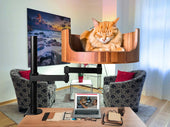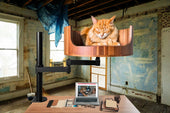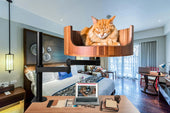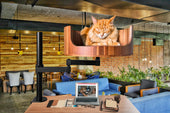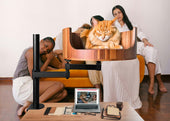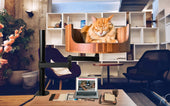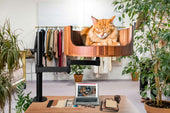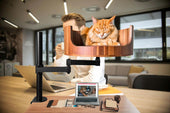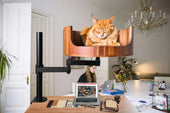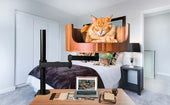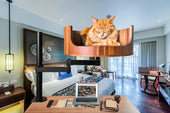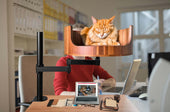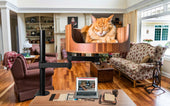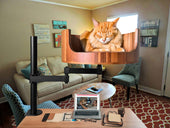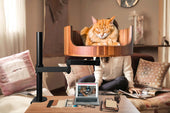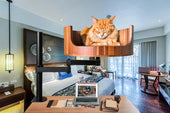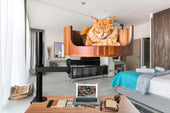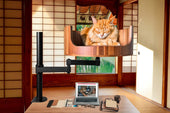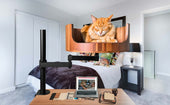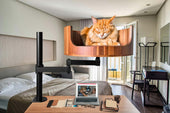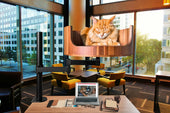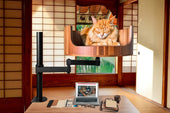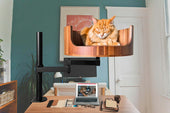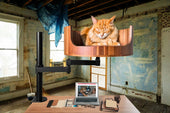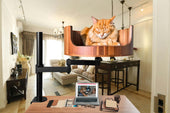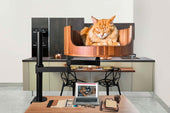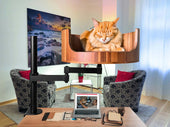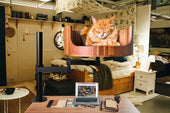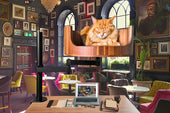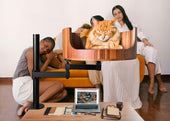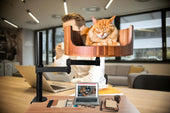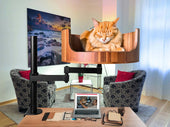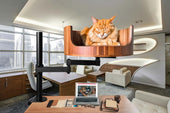
My Cat Throws Up After Eating: Causes and Solutions
Share
Do you have a furry feline friend who seems to have a bit of a sensitive stomach? If your cat is consistently throwing up after eating, it can be concerning and frustrating for both you and your pet. In this article, we will explore the various causes behind why your cat may be experiencing this issue, as well as provide some possible solutions to help alleviate their discomfort.
From dietary issues to hairballs, there are a multitude of reasons why your cat may be vomiting after meals. By examining some of the common culprits, we can better understand how to address and potentially prevent this behavior in the future. Additionally, we will discuss potential solutions and strategies to help minimize your cat's digestive upset, such as adjusting their diet or feeding routine. Whether you are a seasoned cat owner or a first-time pet parent, learning more about why your cat may be throwing up after eating can lead to a happier and healthier life for your furry companion.
1. Common causes of cats throwing up after eating include hairballs, allergies, or eating too quickly.
2. Providing smaller, more frequent meals can help prevent vomiting in cats.
3. Feeding a high-quality, easily digestible diet can reduce the likelihood of stomach upset.
4. Regular grooming to minimize hairballs and consulting a veterinarian for allergies can help address vomiting issues.
5. Monitoring your cat's eating habits and seeking professional advice if vomiting persists are crucial steps in ensuring your cat's health and well-being.
Causes of Vomiting After Eating
There are several potential reasons why your cat may be throwing up after eating. One common cause is that your cat is eating too quickly, leading to overeating. This can cause their stomach to become overwhelmed and result in regurgitation. Another possible cause is food allergies or sensitivities, which can irritate the stomach lining and trigger vomiting. Other potential causes include hairballs, parasites, or even more serious underlying health issues such as diabetes or kidney disease. It's important to consult with your vet to determine the exact cause of your cat's vomiting.
Solutions to Prevent Vomiting
If your cat is repeatedly throwing up after eating, there are several solutions you can try to help prevent this issue. One option is to feed your cat smaller, more frequent meals throughout the day to prevent overeating. You can also try using slow feeder bowls or puzzle feeders to encourage your cat to eat more slowly. It's also important to ensure that your cat is eating a high-quality, balanced diet that is appropriate for their age and health needs. If food allergies are suspected, your vet may recommend an elimination diet to identify trigger ingredients. In some cases, medication or other interventions may be necessary to address underlying health issues contributing to the vomiting.
Case Study: Lucy's Journey to Better Digestion
Lucy, a 5-year-old tabby cat, was regularly throwing up after meals, causing concern for her owner, Sarah. After consulting with her vet, it was determined that Lucy had a food sensitivity to a common ingredient in her cat food. Sarah switched Lucy to a hypoallergenic diet and began feeding her smaller meals spread throughout the day. With these changes, Lucy's vomiting significantly decreased, and she was able to enjoy her meals without any issues. This case study illustrates the importance of identifying and addressing the underlying cause of vomiting in cats to improve their overall digestive health.
Desk Cat Nest FAQ
Is the Desk Cat Nest an effective solution for my cat throwing up after eating?
While the Desk Cat Nest is a comfortable and cozy spot for your cat to relax, it is not a solution for your cat throwing up after eating. It is important to consult with a veterinarian to determine the underlying cause of your cat's vomiting.
What can I do to help prevent my cat from throwing up after eating?
There are several tips you can follow to help prevent your cat from throwing up after eating, including feeding smaller meals more frequently, ensuring your cat has access to fresh water at all times, and avoiding sudden changes in diet.
Can the Desk Cat Nest help with other health issues my cat may have?
While the Desk Cat Nest provides a comfortable and safe space for your cat to rest, it is not a cure for any health issues your cat may have. It is always best to consult with a veterinarian for proper diagnosis and treatment.
Is the Desk Cat Nest easy to clean?
Yes, the Desk Cat Nest is designed for easy cleaning. You can simply remove the cushion and wash it according to the care instructions provided. The rest of the nest can be wiped down with a damp cloth or pet-safe cleaning solution.
In conclusion, if your cat throws up after eating, the Desk Cat Bed is a valuable choice to consider. This innovative bed is designed to elevate your cat's food and water dishes, promoting better digestion and reducing the chances of vomiting after meals. By keeping your cat's food at a comfortable height, the Desk Cat Bed helps prevent swallowing air while eating and promotes healthier digestion. Investing in this product can greatly improve your cat's eating experience and overall well-being.



